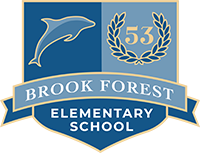Speech Resources
What is the purpose of Speech/Language Pathologists in the schools?
Speech/Language Pathologists (SLP) address student needs in areas of speech, expressive and receptive language, pragmatic (social) language, fluency and voice that impact the student’s ability to participate in their educational environment.
Areas of Need
Articulation:
One of the more familiar areas of speech and language is articulation or the production of speech sounds. Phonology, a subset of this area, looks at the production of speech sounds through the use of speech patterns and addresses therapy from that perspective rather than by single sound error. By age 8, it is expected that a child should have mastered all speech sounds. Articulation problems may impact the student’s ability to be understood in class and/or impact their willingness to participate in classroom discussion.
Expressive Language
Expressive language is basically a child's ability to communicate ideas verbally. It includes the areas of vocabulary, grammar (syntax), explaining word relationships, and asking and answering questions. Expressive language has to do with what the student says or his or her output.
Receptive Language
Receptive language is a child's ability to understand spoken language. It covers the areas of understanding vocabulary, sentence structure and word relationships; as well as understanding and following directions, understanding basic concepts, and processing auditory language. Receptive language has to do with what the child takes in, his or her input.
Pragmatic Language
Pragmatic language consists of a child's social language skills; a child's ability to participate in conversational turn taking, read nonverbal cues, use appropriate tone and language for his or her peer group, respond appropriately to requests for clarification, request clarification when necessary, and understand humor, among other skills. Many students with autism have deficits in the area of pragmatic language; however, there are many students without autism that have difficulty with nonverbal language skills.
Fluency:
An area of speech that specifically targets disfluent speech or stuttering is referred to as “fluency”. A person who stutters has speech that is characterized by frequent repetitions of sounds, words, or phrases and possibly marked physical associations during attempts to speak fluently. Therapy focuses on remediating actual stuttering moments or on fluency techniques that aid in an overall approach to speaking. Stuttering is a most perplexing area because its cause is not fully understood, and for each person, cause can present itself very differently.
Voice:
An area of speech that specifically targets voice quality, pitch, and volume is referred to as voice. Vocal nodules are a common cause of voice problems like hoarseness or breathy voice. Abuse of the vocal folds caused by poor breath support, yelling, exposure to smoky places, and lack of consistent hydration is a common cause of vocal nodules. Teachers frequently suffer from vocal nodules because of the amount of talking they do throughout the day.
Speech and Language Services
A student with difficulties in any of the above areas may require assistance from a Speech/Language Pathologist. What happens if you think your student is in need of speech and language services?
- A parent or teacher referral is made outlining the concern.
- An SLP may conduct brief observation of the student in the classroom.
- If needed, a short one-on-one informal screening may be conducted.
- If needed, a formal evaluation will be done to determine if deficits exist in the areas of concern with informed parental consent.
- An IEP (Individualized Education Plan) meeting will be held summarizing the results of the evaluation and outlining eligibility for services based on existing state criteria.
- Services will be delivered throughout the year during the child’s school day as determined at the IEP meeting. Services may include one to one therapy, small group intervention, therapy within the classroom, or consultation with students, families and school personnel.
